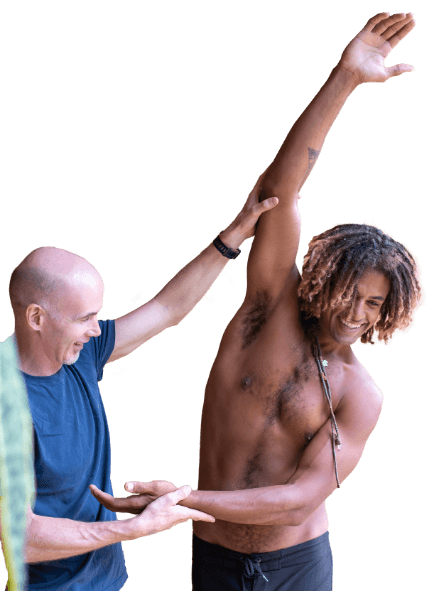
I’ve just got back from the Olympics where I had the privilege of working as an Osteopath for the Canadian Long Track Speed Skating team.
Most of my time was spent in the medical bay of the Canadian residential block located in the Olympic Village. After being there a few days it became apparent to me that there were 3 areas that the athletes would hang out and meet each other: the dining hall, the bus that took them around the village and the medical bay!
It wasn’t uncommon to see Patrick Chan jump on the massage couch just after Hayley Wickenheiser had finished while Brad Jacobs the curling skip looked on wondering when it would be his turn.
The Olympic Village in Sochi is home to about 3000 athletes and staff for the duration of the games. I was excited to be on the inside as I’ve always wondered what goes on in there! In addition to the athletes accommodation the village contains fitness centres, medical clinics and a dining area – essentially it is an all inclusive resort for Olympians.
Canadian Housing Block
Each country at the Olympics is given a small apartment block to house their athletes and staff. The rooms are large and are shared by 2 or 3 athletes. The Canadian team had 3 blocks due to the size of the team, which
totalled about 250 athletes and 280 support staff. Interestingly the men’s hockey team had their own block!
It was easy to identify which country was in which block because of the flags and banners they used to decorate the outside. Canada was well represented!
As competition days grew closer the intensity of the situation expressed itself differently in different athletes. It became important for us, as the medical team it was important to stick to what was tried and tested in training, the phrase, “The Olympics isn’t the place to try something new,” almost became a mantra. Some athletes thrived under the pressure, appreciating the support and channelling the energy into their performances. Others were easily overwhelmed, interpreting the support as pressure and expectation to perform. To help some of them cope with the pressure I spent a few of my days just killing time with the athletes talking about anything but the Olympics.
Ed with Olympian Christine Nesbit
It made me appreciate how tough the Olympics are for athletes. The speed skaters were away from home for 5 weeks and to limit distractions some chose to initiate a social media black out so they could remain focused, but the upshot of having all their food and their day to day chores taken care of was large amounts of free time where doubt could fester. I think the Olympics becomes just as much a test of mental stamina as it is a test of physical skill.
In closing, a note for our future Olympians – I’ll be teaching the same movement class I teach to the Olympians at the Jumping Junipers summer camp in Redwood Meadows Aug 11-15th.

Over the last 10 years Ed has been building a YouTube library to help people manage their own pain or movement limitations and increase performance through exercise. He regularly adds videos so be sure to subscribe and visit regularly


"Oh My Gosh- I am ALREADY feeling relief after a few days! I used to wake up 2-3 times a night with shooting pain that anti inflammatories couldn't touch. Now I have been waking up just because I want to notice what it feels like to lay in bed pain free- THANK YOU!."

"When I first started with your program I was experience a lot of pain. Walking was difficult. I had to stop and catch my breath every few minutes and lean against a wall for support. Now when I walk with my husband we go for over an hour. I never had to sit down and stop...and, hardly any pain!!! 😊😊 I can’t thank you enough."
Frustrated that you aren't recovering fast enough?
Discover how to heal from illness and injury using movement, food and lifestyle.
Leave a Reply